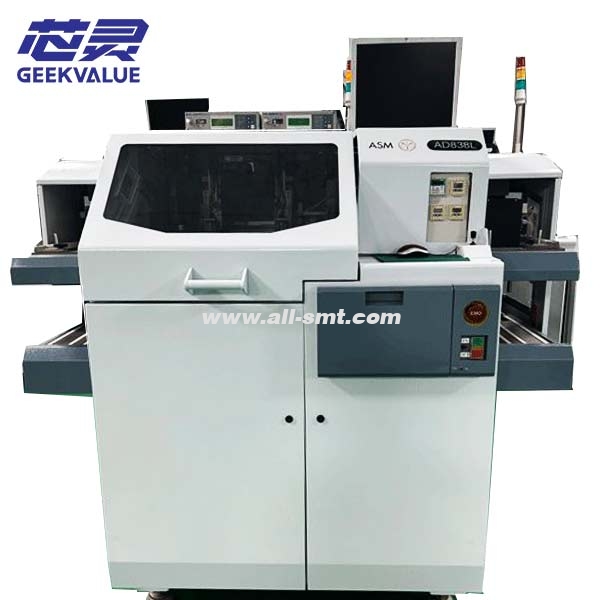Automated packaging machines play a crucial role in modern manufacturing and distribution industries, providing a streamlined solution for packaging products quickly, efficiently, and consistently. These machines reduce labor costs, enhance packaging precision, and speed up production processes. But how do these advanced machines work? In this article, we'll explore the key components, working principles, types, and benefits of automated packaging machines.

What is an Automated Packaging Machine?
An automated packaging machine is a system designed to package products with minimal human intervention. These machines use mechanical, electrical, and control systems to carry out various packaging tasks such as filling, sealing, labeling, and cartoning. The main goal of these machines is to enhance production speed, improve consistency, and minimize errors in the packaging process.
Key Components of Automated Packaging Machines
Feeding System
The first step in the packaging process is product feeding. Automated packaging machines typically feature a conveyor belt or other feeding systems that transfer products to the machine. Depending on the product type, different feeding systems, like vibratory feeders or rotary tables, are used.Measuring and Filling System
This component ensures that the correct quantity of product is packaged. Using sensors, scales, or volumetric fillers, the machine measures the product to ensure accuracy. This step is vital in industries such as food packaging, where precise portion control is critical.Forming and Sealing System
In some cases, automated packaging machines form the packaging material (e.g., pouches or boxes) and then seal it. Machines like flow wrappers, vertical form-fill-seal (VFFS), and horizontal form-fill-seal (HFFS) machines perform this task. The forming and sealing process involves heat, pressure, or adhesives to secure the package, ensuring it is airtight and tamper-proof.Labeling and Printing System
Automated packaging machines also integrate labeling and printing systems that apply barcodes, expiration dates, or branding information. Labels can be applied directly to packages, or a separate labeling machine may be used to apply stickers or tags.End-of-Line Packaging
After the product is packaged, it may be transferred to end-of-line equipment for boxing or palletizing. These systems can automatically group and stack packaged items onto pallets, making them ready for shipment.
Types of Automated Packaging Machines
Form-Fill-Seal Machines
These machines are among the most popular types of automated packaging machines. They take a roll of flexible packaging material, form it into a pouch or other shape, fill it with the product, and then seal it. VFFS (Vertical Form-Fill-Seal) and HFFS (Horizontal Form-Fill-Seal) machines are common in industries that package granular, liquid, or powder-based products.Flow Wrapping Machines
Flow wrapping machines wrap products in a continuous flow of packaging material, typically used for wrapping bars, candies, or baked goods. The product is inserted into the film, and the machine wraps it before sealing the ends.Cartoning Machines
These machines automatically form cartons, fill them with products, and then seal them. Cartoning machines are widely used in the pharmaceutical and consumer goods industries, particularly for packaging bottles, boxes, or tubes.Shrink Wrapping Machines
Shrink wrapping machines enclose products in a plastic film, then apply heat to shrink the film around the product, creating a tight seal. This type of machine is commonly used for multipack products or for wrapping single items like bottles or cans.
Advantages of Automated Packaging Machines
Increased Efficiency
Automated packaging machines significantly increase the speed of packaging processes. They can operate 24/7 with minimal breaks, leading to higher throughput and less downtime compared to manual labor.Cost-Effective
While the initial investment in automated packaging machines can be high, they save costs in the long run by reducing labor costs, minimizing waste, and improving overall productivity.Consistency and Quality Control
Automation ensures that each product is packaged identically, which is essential for maintaining product quality and brand consistency. Automated systems can also reduce human error, which is particularly beneficial for sensitive products like food or pharmaceuticals.Flexibility and Customization
Modern automated packaging machines are designed to handle a wide variety of product types and packaging materials. Whether it’s small consumer goods or large industrial parts, these machines can be adjusted to accommodate different shapes, sizes, and packaging formats.Space Saving
Automated packaging machines often have a compact design, allowing manufacturers to save valuable floor space. This is especially beneficial in industries where space is limited, such as in small or medium-sized production facilities.
Applications of Automated Packaging Machines
Food and Beverage Industry
In the food industry, automated packaging machines are used to package products ranging from snacks to beverages. These machines help maintain hygiene, extend shelf life, and preserve the quality of the products.Pharmaceutical Industry
Pharmaceutical companies use automated packaging machines to package tablets, capsules, and liquid medicines. These machines ensure that each product is packaged according to strict safety standards, with clear labeling for tracking and traceability.Cosmetics and Personal Care
The cosmetics industry relies on automated packaging machines for filling and sealing containers of creams, lotions, and perfumes. The machines are designed to handle delicate products and packaging materials, ensuring that the packaging process is both efficient and aesthetically pleasing.Consumer Goods
In the consumer goods industry, automated packaging machines are used for products like household cleaners, detergents, and small electronic items. These machines help streamline production lines, enabling businesses to meet high demand while maintaining packaging consistency.
Automated packaging machines have revolutionized the way products are packaged across various industries. By integrating advanced technologies such as robotics, sensors, and control systems, these machines offer speed, accuracy, and efficiency that traditional manual packaging methods simply cannot match. Whether in food, pharmaceuticals, or consumer goods, automated packaging machines are essential for businesses looking to stay competitive in today's fast-paced market.
If you’re considering investing in automated packaging solutions, it's crucial to evaluate your specific needs, such as product type, packaging materials, and production volume. With the right system, you can significantly improve your packaging process, reduce costs, and enhance your overall productivity.



